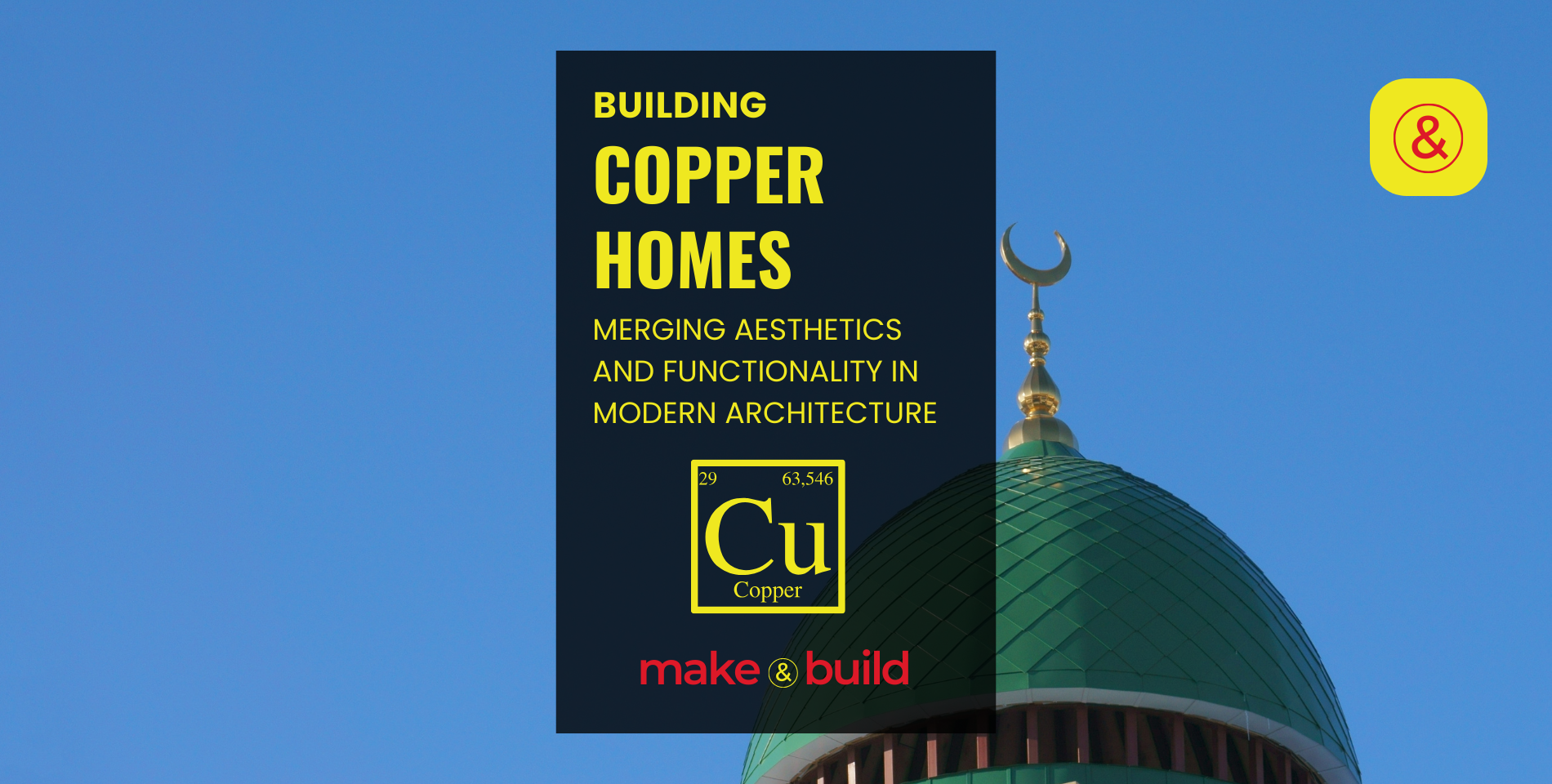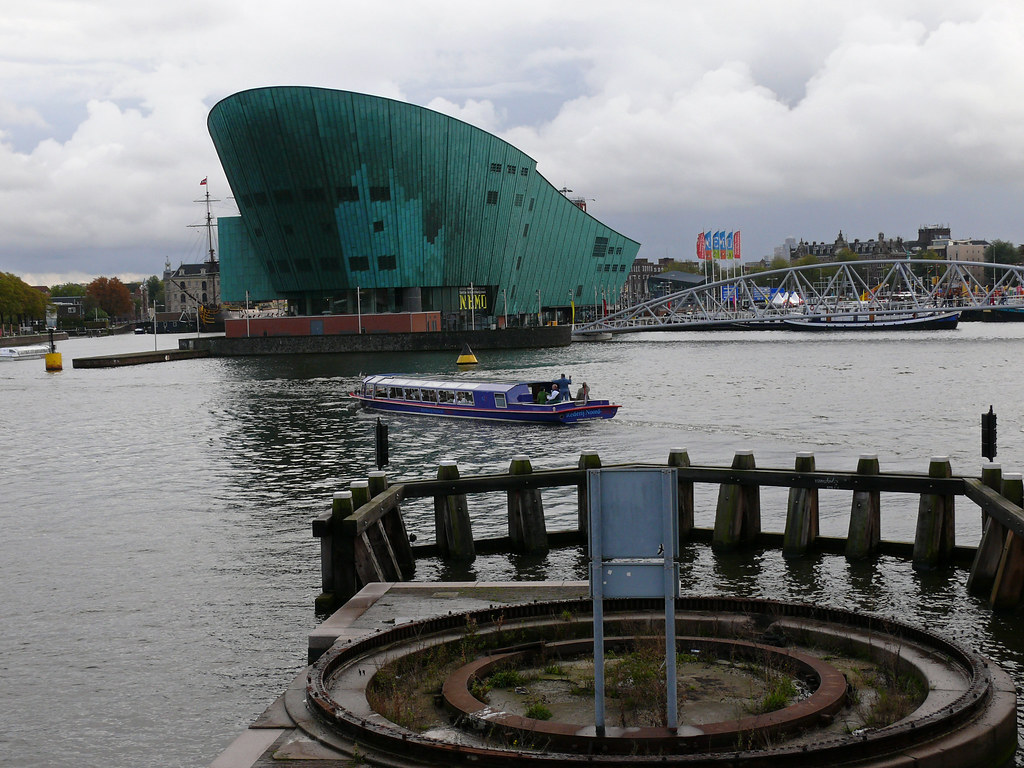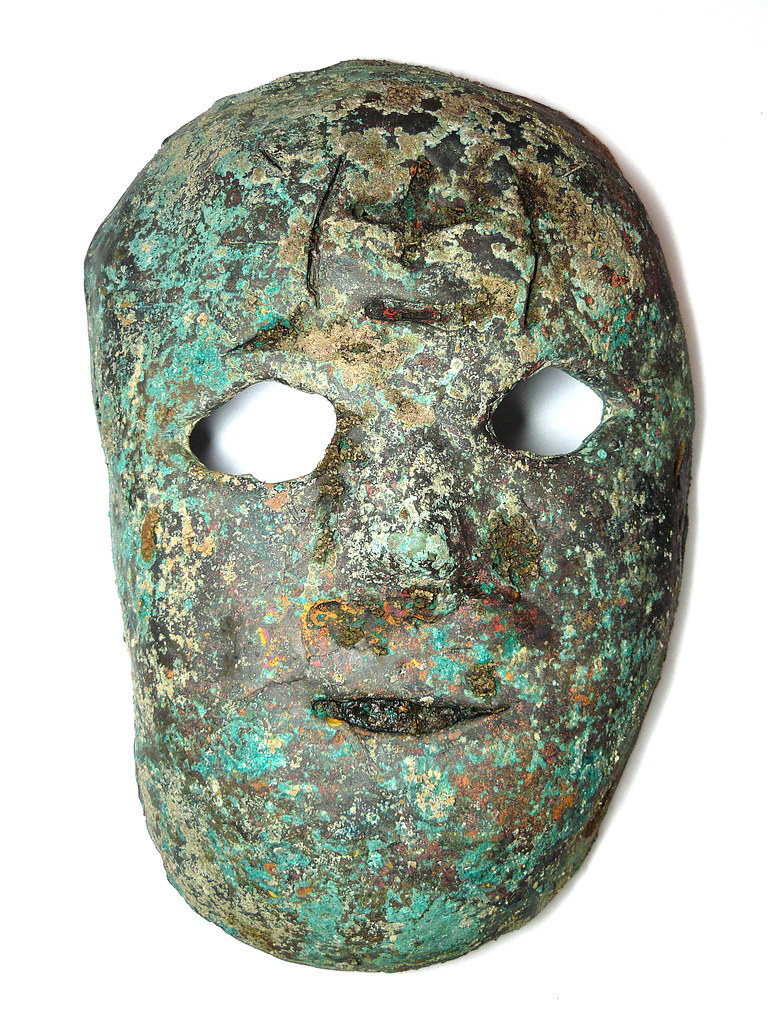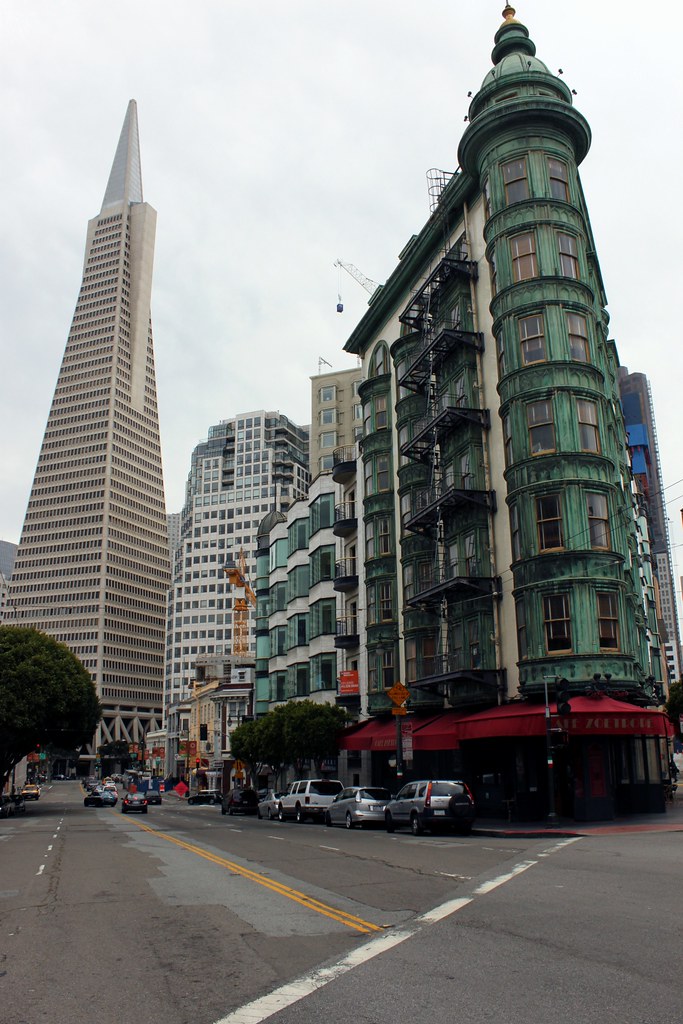In the realm of architectural marvels, copper stands as a material of antique charm and contemporary relevance. Its gleaming allure, paired with a range of functional benefits, makes it a prized choice for modern-day constructions. The inherent beauty of copper not only lends a visually arresting facade to structures but also dovetails with numerous practical advantages, making it a holistic choice for aesthetically appealing and functionally robust architectural designs.
Modern Architecture, often synonymous with the Modernist movement, emerged in the early 20th century. It was a response to traditional architectural designs deemed overly ornate and disconnected from the functionality and simplicity needed for an evolving urban lifestyle. This architectural style is characterized by its emphasis on form following function, simplicity, minimalism, and the innovative use of new materials and technologies.
Here’s a closer look at the defining traits and the rationale behind Modern Architecture and how copper home building is carving out its longevity in this field.
What is Modern Architecture?
Form Follows Function
The phrase “Form Follows Function” is the cornerstone of modern architecture, implying that the design of a building should be solely based upon its intended purpose without unnecessary embellishments.
Simplicity and Clarity of Forms
This ideology tends towards simplicity and clarity of forms, eliminating any superfluous details that do not serve a functional purpose.
Innovative Materials and Technologies
The era of Modern Architecture saw the introduction and use of new materials like steel, glass, and reinforced concrete, which allowed for new forms of construction and aesthetic expressions.
Open Floor Plans and Large Windows
A notable feature of Modernist designs is the incorporation of open floor plans and large windows to create an airy, spacious feel and to bring the outdoors in, promoting a connection with nature.
Integration with the Surrounding Environment
This architecture aims at harmonizing buildings with their surroundings, often through landscaping and the use of natural materials.
Minimalism
The aesthetic of minimalism is prominently valued in modern architecture, stripping down design elements to bare essentials and valuing space over decor.
Machine Aesthetic
The Machine Aesthetic is another facet of Modern Architecture, celebrating industrial and machine aesthetics by incorporating elements that showcase engineering and mechanical ingenuity.
Social and Political Ideals
Social and political ideals were also carried along with modern architecture, harboring a belief in using design to improve society, often seen in the construction of public and low-cost housing.
Sustainability
Although not initially a focus, modern architecture has evolved to incorporate principles of sustainability, blending the old ethos with new insights to cater to contemporary concerns.
Global Movement
This global movement saw different regions adapting its principles to local conditions and cultural contexts, leading to a rich and diverse architectural landscape worldwide.
Modern Architecture continues to evolve, integrating new technologies, materials, and design concepts, while still holding onto its core principle that design should embody simplicity, functionality, and rationality.
The Aesthetic Allure of Copper
Copper’s unique color palette is nothing short of a visual treat.
The warm, metallic hue of new copper presents a rich aesthetic that exudes elegance and modernity. Over time, copper undergoes a natural patination process, transforming into an array of greens and blues that add a vintage charm while acting as a protective layer against the elements. This ever-evolving aesthetic makes copper a living material that narrates the passage of time through its changing facade.
Time-Tested Material
The longevity of copper is a testament to its robust nature.
Its resistance to corrosion, coupled with the protective patina, ensures that copper structures endure for centuries. The use of copper not only speaks volumes about a structure’s aesthetic appeal but its desire for permanence and resilience against time and elements.
From Bronze Age to Modern Age: Copper’s Evolution in Architectural Trends
The story of copper is as ancient as civilization itself, tracing back to the Bronze Age when it was first harnessed to make durable tools, weapons, and ornamental items. Over millennia, copper found its way into architectural marvels, its characteristic sheen adorning the roofs, domes, and facades of structures that would stand the test of time. As we transitioned into the modern age, the architectural realm saw a renaissance in the use of this timeless material, now seamlessly integrated into contemporary designs. This section unravels the fascinating journey of copper from the hallmarks of ancient architecture to its sleek assimilation in modern structures, showcasing how modern architecture has rekindled the appreciation for copper’s timeless beauty and functionality.
Sleek Integration in Modern Structures
Today, copper finds itself at the heart of modern design schemes. Its sleek appearance, coupled with its durability and ease of maintenance, resonates with the minimalist ethos of modern architecture. The material has seen a revival in urban landscapes, adorning the exteriors of contemporary homes, commercial edifices, and avant-garde public installations. Its versatile nature allows it to be molded into cladding, roofing, or decorative accents, each application reflecting the inherent beauty and timeless charm of copper.
Tech-Savvy Copper: Modern Buildings Meeting Future Challenges
In an era where technological advancement is not just a luxury but a necessity, the architecture of modern buildings is evolving to meet the demands of innovation and health-conscious living. Among the myriad materials architects have at their disposal, copper emerges as a standout for its unique blend of aesthetic appeal, electrical conductivity, and antimicrobial properties. This section delves into the role of copper in smart buildings, bridging the gap between modern architectural aesthetics and the growing demand for intelligent, health-conscious building designs.
The Conductor of Smart Solutions
Copper’s excellent electrical conductivity places it at the forefront of smart building solutions. In modern structures where intelligent systems govern everything from lighting and temperature to security and energy management, copper wiring proves to be indispensable. Its high conductivity ensures efficient energy transmission with minimal losses, facilitating the seamless operation of smart technologies that modern buildings rely on. Moreover, copper’s durability and resistance to corrosion make it a reliable choice for long-term applications, aligning with the modern architectural ethos of sustainability and functionality.
An Antimicrobial Marvel
In a world increasingly conscious of health and hygiene, copper’s antimicrobial properties come as a boon. Copper surfaces naturally eliminate a wide range of harmful microbes, making them a smart choice for high-touch areas like door handles, railings, and countertops. Incorporating copper in high-traffic areas of modern buildings can significantly reduce the spread of harmful bacteria and viruses, contributing to a healthier living environment. This attribute of copper is particularly pertinent in the current times, adding a layer of health security without compromising on aesthetic appeal.
Bridging Aesthetics with Intelligence
Copper’s warm hues and versatile nature make it a material that aligns well with the sleek, minimalist aesthetics of modern architecture. Whether employed in facade cladding, roofing, or interior accents, copper adds a touch of elegance while housing the intelligent systems that drive modern buildings. Its ability to seamlessly blend with contemporary design schemes while housing smart technologies makes copper a bridge between aesthetic desirability and functional exigency.
Harnessing Copper for Future Challenges
As modern buildings continue to evolve, meeting the challenges of energy efficiency, health-conscious design, and technological integration, copper’s role is bound to expand. Its proven merits in conductivity, antimicrobial activity, and aesthetic appeal make it a material well-suited to meet the demands of modern architecture and the expectations of a tech-savvy, health-conscious populace.
Sustainability at the Core: Copper in Modern Green Building
The narrative of modern architecture has increasingly leaned towards sustainability, reflecting a collective consciousness towards eco-friendly construction practices. Among the palette of materials vying for a spot in the green building arena, copper shines brightly. Its characteristics of recyclability and durability, along with its functional advantages, align impeccably with the sustainability ethos that modern architecture advocates. This section explores the alignment of copper usage with the modern drive towards sustainable building practices, underscoring its recyclability, durability, and substantial contributions to eco-friendly construction.
The Cycle of Recyclability
Copper stands as a poster child for recyclability in the construction sector.
Unlike many other materials, copper does not lose its essential properties during the recycling process, making it a material that can be reused indefinitely. The high value of copper also incentivizes its recovery and recycling post-use, contributing to a circular economy in the construction industry. By opting for copper in building designs, modern architects contribute to reducing the demand for virgin materials, subsequently decreasing the environmental footprint of their projects.
Built to Last: The Durability Factor
The longevity of copper is another attribute that resonates with the sustainability ethos of modern architecture. Copper’s resistance to corrosion and its ability to withstand extreme weather conditions make it a long-lasting material requiring minimal maintenance. Its durability means that structures employing copper need less frequent repairs and replacements, contributing to resource conservation over the lifespan of the building. The patina that forms on copper over time not only adds aesthetic value but acts as a protective layer, further enhancing its durability and reducing the need for additional protective coatings or treatments.
Functional Sustainability
Copper’s functionality extends beyond mere aesthetics and durability; its high electrical conductivity makes it a prime material for energy-efficient building systems. In modern structures striving for energy optimization, copper wiring and components play a critical role in reducing energy loss, thereby contributing to the overall energy efficiency and sustainability of the building. Moreover, copper’s antimicrobial properties add a health-conscious dimension to its sustainability profile, offering a cleaner and safer living environment without the need for chemical treatments.
A Green Material for Modern Mastery
The synergy between copper and modern green building practices is evident. As modern architecture continues to traverse the path of sustainability, the integration of copper in modern designs is not merely a nod to aesthetics but a significant stride towards eco-conscious construction. Its recyclability, durability, and functional benefits make copper a compelling choice for modern architects aiming to meld aesthetic allure with sustainable practices.
Does Copper Block Electromagnetic Frequencies?
In today’s digitized world, the concern regarding electromagnetic frequency (EMF) exposure and its potential effects on health and electronic devices is growing.
This brings us to the exploration of materials like copper, known for its excellent conductivity, and its ability to act as a shield against electromagnetic interference (EMI) and radio frequency interference (RFI). This section delves into the capabilities of copper in blocking or mitigating electromagnetic frequencies and its relevance in modern construction and design.
Copper as an Electromagnetic Shield
Copper is highly effective in providing electromagnetic shielding due to its excellent electrical conductivity. When electromagnetic waves encounter a copper surface, they are absorbed and re-emitted as an electric current through the material, thus preventing the waves from passing through. This quality makes copper a popular choice for electromagnetic shielding applications in various industries including electronics, telecommunications, and aerospace.
Architectural Relevance
The architectural relevance of copper’s electromagnetic shielding capability is multifaceted. In modern buildings, where a myriad of electronic devices and wiring systems operate, copper can play a significant role in reducing electromagnetic interference, ensuring the smooth operation of electronic systems and enhancing the living or working environment. Furthermore, in specialized facilities such as hospitals or data centers, where electromagnetic interference can have significant ramifications, copper shielding can be a critical design element.
Enhancing Health and Well-being
There’s a growing body of research investigating the potential health impacts of prolonged exposure to electromagnetic frequencies, especially in urban settings where electronic devices are ubiquitous. By incorporating copper shielding in architectural designs, it’s possible to create living and working spaces that minimize EMF exposure, potentially contributing to the well-being of occupants.
Aesthetic and Functional Harmony
While the functional benefits of copper as an electromagnetic shield are clear, its aesthetic appeal is not compromised. The warm, natural hue of copper can be seamlessly integrated into modern architectural designs, ensuring that both aesthetic elegance and functional efficacy are achieved.
Future-Focused Building
As modern architecture continues to evolve in response to contemporary challenges, the integration of materials like copper that offer both aesthetic appeal and functional benefits like electromagnetic shielding will likely gain prominence. Copper’s ability to block electromagnetic frequencies is not just a functional advantage but a forward-focused response to the increasing demand for healthier and technologically robust living and working spaces.
Iconic Copper Adornments
The architectural world is replete with iconic structures that have leveraged the charm of copper to etch an indelible mark in history and urban landscapes.
- The Statue of Liberty: Adorned with a copper exterior, this iconic monument showcases the beautiful patina that has formed over the years, symbolizing freedom with a touch of timeless elegance.
- Löyly Sauna in Helsinki: This modern structure is encased in a wooden frame with copper roofs and panels. The seamless blend of copper with wood sets a serene yet modern ambiance.
- Kresge Auditorium at MIT: With its thin-shell copper roof, the auditorium is a hallmark of modern architecture, embodying elegance and innovation.
Each of these edifices, with their distinct design ethos, underscores the versatility and aesthetic richness that copper brings to the architectural table.
A Confluence of Beauty and Function
The beauty of copper goes beyond skin-deep. Its antimicrobial properties, durability, and recyclability make it a smart choice for sustainable and health-conscious building projects. The aesthetic appeal of copper, when married to its functional advantages, creates a win-win scenario for architects and occupants alike.
Copper: The Material of the Future
The application of copper in modern architecture is not bound by traditional motifs. The contemporary architectural scene is abuzz with innovative applications of copper, from facades and roofing solutions to interior accents and decorative elements. The ability to meld aesthetic charm with functional robustness makes copper a material par excellence for the architectural endeavors of today and tomorrow.





